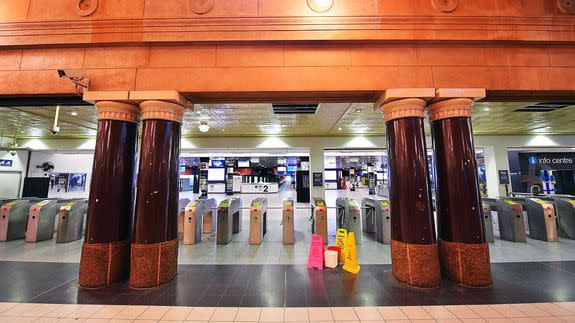Australian politicians blame wind turbines for statewide power outage

In the wake of an unprecedented blackout that cut off an entire Australian state from electricity on Wednesday into Thursday, some politicians are vilifying renewable power sources, particularly wind turbines.
Had the state of South Australia, which includes Adelaide, a city of 1.2 million, not put so much emphasis on cutting greenhouse gas emissions by adding renewable energy facilities, these leaders say, the blackout during a rare, extreme storm would not have occurred.
Considering the rapid rise in renewables around the world, including the U.S., the political fight that has broken out in Australia is not an issue limited to one nation. In fact, it could foreshadow future fights if blackouts occur in the U.S. or Europe, two areas where renewable energy use has increased recently.
SEE ALSO: Extreme storm knocks out power to entirety of South Australia
Deputy Prime Minister Barnaby Joyce told ABC radio that South Australia's reliance on wind power for about 50 percent of its electricity needs, or about 1,000 megawatts, contributed to the statewide blackout.
“Obviously we know that South Australia has had a strong desire to become basically all renewable energy and the question has to be asked: Does this make them more vulnerable to an issue such as what happened last night?" Joyce reportedly told a Sydney radio station, according to The Guardian.
Peter Michalak sent in this incredible photo from Redwood Park showing #Adelaide in near-total darkness #SAstormshttps://t.co/7VTK2EMOWK pic.twitter.com/5cSeqISn0w
— Greg Barila (@GregBarila) September 28, 2016
“If you turn power into just a complete social policy and say, 'well, we are going to save the planet one state at a time,' and in so doing you create vulnerability to your state, so that if it comes under stress with a severe lightning storm, as they did, that this makes it more likely that you will have a total blackout,” Joyce said.
However, ElectraNet, which owns transmission lines in South Australia, said the severe storm — which included powerful winds and tens of thousands of cloud-to-ground lightning strikes, damaged three out of the four transmission lines that connect Adelaide with northern parts of South Australia.
In addition, ElectraNet said on its website that 23 transmission towers across the state were damaged, triggering the blackout.
None of the politicians have proposed an explaination for how wind turbines could've caused such a widespread outage, a first in Australia's history, whereas ElectraNet has done so.
23 transmission towers pushed over in SA storms. Electranet says they've had cyclones in Queensland with less damage to the network.
— David Bevan (@DavidBevanSA) September 28, 2016
The storm's winds reached more than 60 miles per hour, and nearly 80,000 lightning strikes were recorded in parts of the state.
In South Australia, as in many U.S. states, wind power has replaced so-called baseload power generation stations, like coal-fired plants, which pump a constant supply of electricity into the grid but also emit harmful global warming pollutants like carbon dioxide.
Wind turbines, on the other hand, are clean energy sources, but produce varying amounts of power depending on weather conditions.
South Australia met its target of producing 33 percent of its energy from renewables in 2014, and has set a new target of 50 percent by 2025. The state has invested about $6.6 billion in expanding renewables, according to RenewablesSA, which is a state government initiative aimed at expanding the use of clean-burning energy sources like wind and solar power.
Prime Minister Malcolm Turnbull told reporters that the state's aggressive push into renewables may have contributed to the unprecedented statewide blackout.
However, the wind energy industry is pushing back at such criticism, saying the politicians are simply wrong.
Glenelg getting battered by waves and ferocious winds. Beach has disappeared. #AdelaideStorm @abcnewsAdelaide @abcnews #Adelaide pic.twitter.com/KPXFVPmD8j
— Loukas Founten (@loukasfounten) September 29, 2016
“Wind was going strong when the network went off and was among the first back on when the network recovered," said Andrew Bray of the Australian Wind Alliance, according to The Australian. The wind power industry says turbines did not cause the blackout.
“The failure of the network was a weather event, pure and simple. Extreme weather knocked out 23 transmission pylons. Storms of this magnitude will knock out the power network no matter what the source of power is," Bray told the newspaper.
A federal inquiry is likely to be launched into the cause of the more than 24-hour blackout, which may settle some of the debate going on now. Officials in states with a high reliance on wind power, such as Texas, will be closely watching the developments Down Under.
